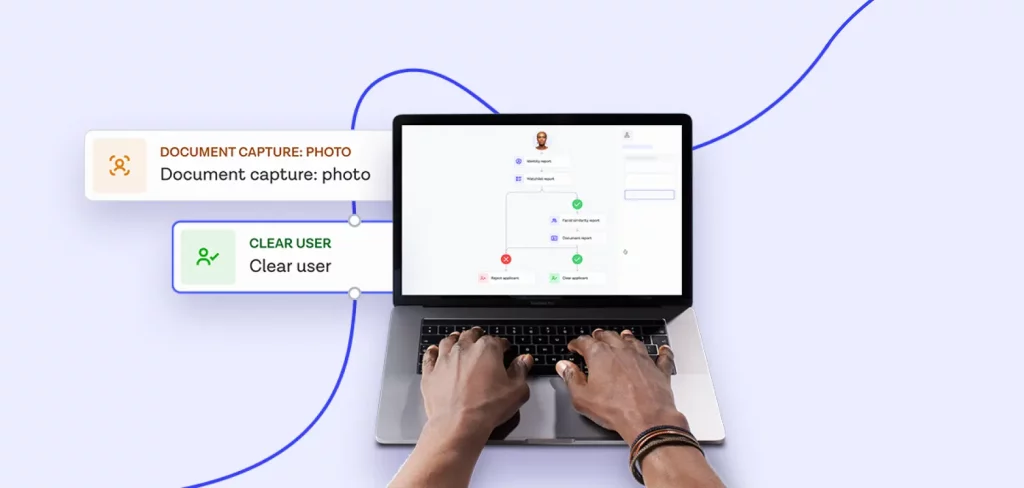
To conceal funds obtained via illicit means, criminals launder or ‘wash’ money through the financial system to disguise its origin. This is known as money laundering.
International and local anti-money laundering (AML) regulations require businesses to take necessary steps to prevent the illegal use and laundering of funds.
To help combat money laundering, businesses must understand the different stages. There are three stages of money laundering — keep reading to learn what they are and how the anti-money laundering process can help stop them.
Understanding anti-money laundering
Anti-money laundering (AML) is a collection of laws, regulations and processes that aim to prevent criminals from laundering money and disguising the origin of illegal funds. According to the UN, criminals launder the equivalent of between 2% and 5% of global GDP — which is around $2 trillion — every year.
Businesses have a legal responsibility to assess money laundering risks and report any suspicious transactions to authorities. If businesses fail to do this they can face large AML fines, penalties or even jail time.
What are the 3 stages of money laundering?
Broadly speaking, there are three stages, or types of money laundering:
- Placement (depositing): Getting illegal funds into the legitimate financial system
- Layering: Using transactions to conceal the illicit origin of funds
- Integrating: Making laundered funds available for spending by reinvesting them
What is placement in money laundering?
The first step of money laundering involves criminals moving illegal funds to disguise them as a legitimate source of income. Some tactics that criminals use during this stage include:
- False invoices: Criminals create fake invoices to match cash amounts, to make it look like the cash was used to settle a transaction.
- Foreign bank accounts: Criminals take small amounts of cash abroad and deposit it in a foreign bank before sending it back to the country of origin.
- Offshore companies: Businesses registered or established outside the country of origin provide another way for criminals to hide illicit funds.
- Cash-based businesses: Criminals add cash to legitimate businesses. Such cash-based businesses include car parks, casinos, car washes and launderettes.
- Micro-laundering: Individuals or groups of people deposit small amounts of illegal funds – that fall below AML reporting thresholds – into bank accounts.
At this stage, anti-money laundering procedures should focus on trying to identify the illegal source of the funds.
What is layering in money laundering?
Once the funds have been placed into the financial system, layering (or as it’s sometimes known, structuring) hides the illicit origin. Often criminals will divide large bulks of funds into smaller transactions to fall under the threshold of AML regulations. The aim is to obscure the audit trail, so it becomes virtually impossible to identify the original source of the funds.
Layering often takes place across different geographies to make it harder to detect.
Tactics include:
- Trading in international markets
- Trading in foreign countries
- Purchasing and selling luxury goods
Because structuring or layering involves breaking up a large sum into smaller components, it is also called smurfing in money laundering. This term comes from how cartoon smurfs would break a larger task into smaller pieces, each to be done by one smurf.
So what is an example of smurfing? If a money laundering scheme has $90,000 to ‘clean’, they could utilize ten ‘smurfs’ each depositing $9,000 into separate bank accounts. Because this amount is under the $10,000 limit that generally triggers AML scrutiny, these ten transactions are less likely to be flagged than a single $90,000 deposit.
What is the integration stage of money laundering?
This is the final stage of money laundering. Criminals integrate the funds back into their legitimate accounts, so they can use them without attracting the attention of authorities. They will typically do this through a series of smaller transactions.
They might integrate the funds by purchasing a luxury asset or property, creating fake employees and adding them to company payrolls, paying out loans to directors of a shell company, or paying dividends to shareholders of criminally-controlled companies.
Anti-money laundering process
Businesses have a responsibility to conduct AML processes and comply with AML regulations. The inter-governmental Financial Action Task Force (FATF) sets out international standards which have a global impact. Every major financial institution must comply with FATF regulations and follow its guidance on AML measures, as well as AML requirements in local jurisdictions.
Know your customer (KYC) is also an important part of the AML process, aiming to stop money laundering in its early stage. KYC regulations require a business to identify their customers and assess customer risk profile during the account creation process.
Anti-money laundering policies and procedures
AML policies and procedures require financial institutions to monitor customer transactions and deposits, and to flag any suspicious activities. Undertaking the following steps will help businesses to remain compliant with AML regulations.
- Implement KYC measures. KYC regulations require financial institutions to verify the identities of customers as part of the AML process.
- Conduct customer due diligence (CDD) in line with FATF recommendations. Keep up-to-date records of any high-risk clients.
- Conduct ongoing transaction monitoring and flag any suspicious activity to local authorities.
Onfido helps over 900 businesses globally meet their KYC and AML compliance and regulatory requirements with a comprehensive library of award-winning document and biometric verifications, trusted data sources, and passive fraud detection signals.
We help hundreds of global businesses meet a diverse regulatory landscape with our Real Identity Platform. It features award-winning document and biometric verification, trusted data sources, fraud detection signals, and can be orchestrated in Onfido Studio — no-code required.






